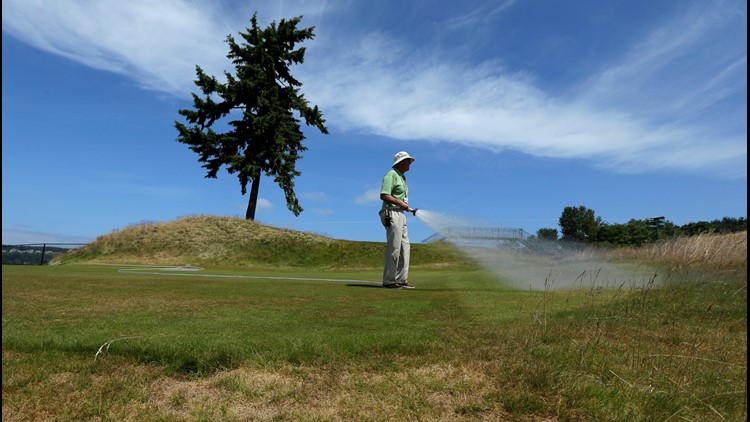CALIFORNIA, USA — California continues to deal with cyclical drought scenarios, but each year as water demand rises, water resources are strained.
California Governor Gavin Newsom proposed the idea that, if local water regulators can't find a way to lower water usage among customers, he would consider setting regulations statewide.
UC Davis assistant professor and urban ecologist Alessandro Ossola says there is a balance that needs to be met when it comes to urban landscapes and drought tolerant plants. Across the state, some regions require more water than others, like valley spots as opposed to coastal areas.
Somewhere between 40% and 50% of water is used on residential landscape. Without greenery and big shade, urban areas can often see much higher temperatures due to all the concrete.
"About 50% across the entire state of California, 50% of water for residential uses is used for landscaping. Of course, there are differences if we are in urban areas along the coast, they use less water overall compared to inland urban areas. But still, that's a significant amount of water that we can't afford any more to be wasted, particularly this year" Ossola said.
It's called the urban heat island index. It can cause downtown areas to experience much hotter temperatures due to black tops absorbing sunlight. With trees, shade and even vines growing onto homes and buildings, heat can be reduced. Finding that balance though between watering vines and keeping a city cool can be difficult.
Jennifer Funk, a UC Davis professor of plant sciences, says our native species, including California's Valley Oak trees, are key in lowering temperatures while still being resistant to drought.
"Valley Oaks are probably one of the species that used to be really common before we cut them all down. And so Valley oaks, they can... actually grow these really, really deep roots, and so they can access groundwater, you know? Water that's just really deep in the soil" Funk said.
Trees are prevalent to our area as native species, but so are grasses and shrubs.
"What's great about those plants is once they're established, their root systems are really deep. And so again, they can really draw on some of that water year round," Funk said.
For a pop of color in the yard, annual flowers like poppies, lavender and goldfields need very little water and can withstand a lot of sunshine.
Watering early in the morning is important for helping plants retain the water throughout the day. Plants that only need a little water, a couple times a week, are ideal.
"We really need to select plants that can withstand these conditions, not only acute conditions, like we might have been on this particular year, but really conditions that might be perpetrating over decades now," Ossola said.
WATCH ALSO:



















